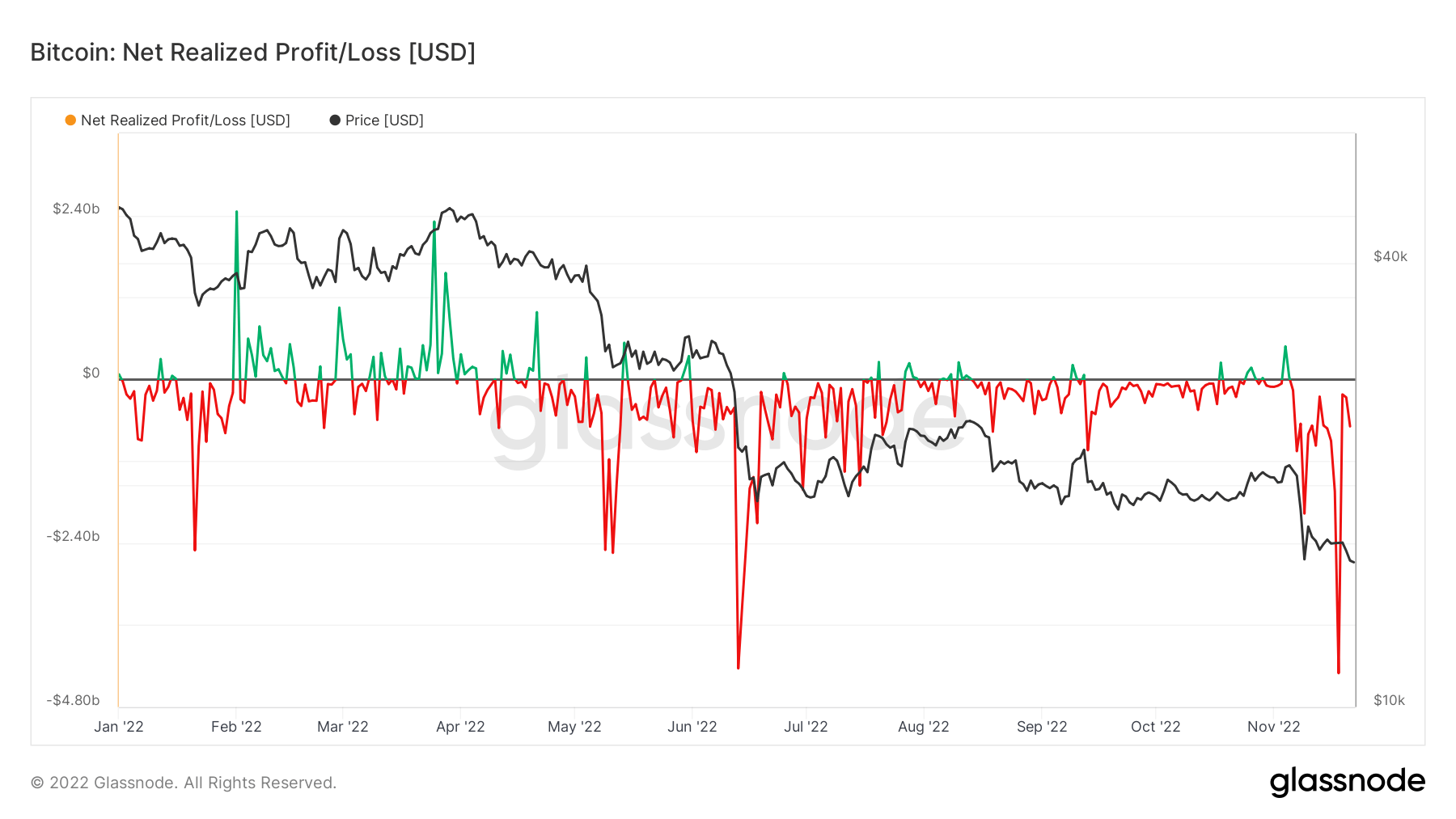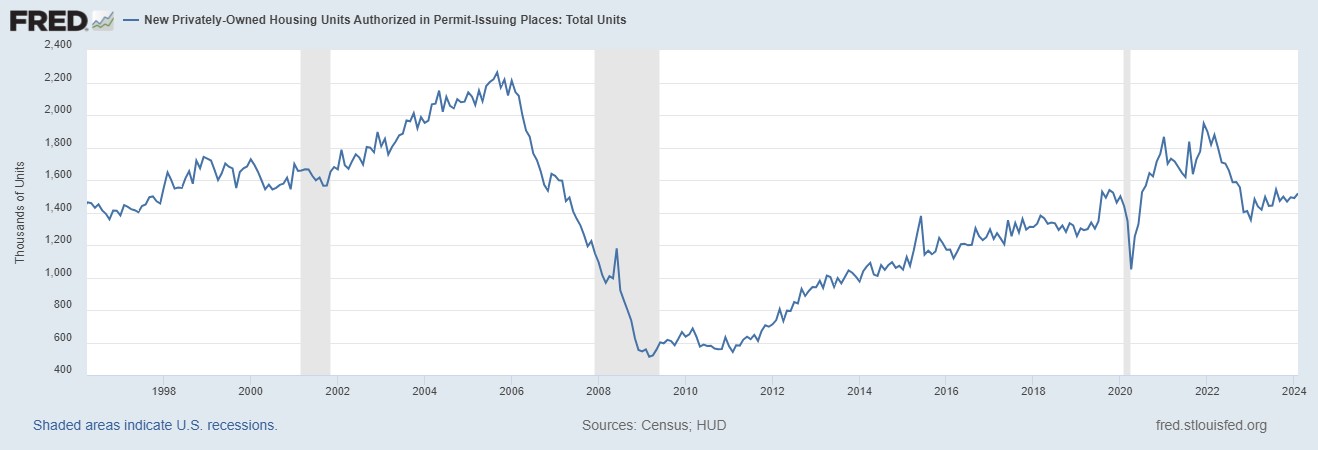Uncategorized
Realized Bitcoin loss from the FTX fallout surpasses LUNA collapse
The collapse of FTX wreaked havoc on the market, wiping out billion from the market cap.
The post Realized Bitcoin loss from the FTX fallout surpasses…

The collapse of FTX wreaked havoc on the market, wiping out billion from the market cap. Bitcoin took its heaviest hit this year, dropping to a low of $15,500 and struggling to break through the strong resistance at $16,000.
Bitcoin’s volatility seems to have shaken the confidence of many investors and pushed them to sell well below their buying price. Glassnode data analyzed by CryptoSlate showed that realized Bitcoin losses reached their yearly high of $4.3 billion.
The first wave of selling pressure seen at the beginning of November pushed realized loss to around $2 billion.
A slight consolidation in losses led many to assume that the fallout was contained, but an additional wave of selling pressure pushed the losses even lower. The realized losses caused by the collapse of FTX are now higher than the realized losses caused by the Luna collapse in June this year.
The losses suffered had an adverse effect on Bitcoin’s correlation to other cryptocurrencies. Bitcoin and altcoins have been trading at a 1:1 correlation since the beginning of November, indicating a level of volatility unseen since the beginning of the COVID-19 pandemic in March 2020.

The post Realized Bitcoin loss from the FTX fallout surpasses LUNA collapse appeared first on CryptoSlate.
bitcoin btc pandemic covid-19Uncategorized
COVID-19 Infection Increases Risk Of Autoimmune Diseases By Up To 30 Percent: Study
COVID-19 Infection Increases Risk Of Autoimmune Diseases By Up To 30 Percent: Study
Authored by George Citroner via The Epoch Times (emphasis…

Authored by George Citroner via The Epoch Times (emphasis ours),
Surviving COVID-19 may leave you at heightened risk of developing debilitating autoimmune diseases like rheumatoid arthritis and lupus for up to a year after infection, according to new research.
However, the study also found that vaccinating against the virus could significantly lower your chances of developing these potentially life-altering inflammatory conditions.
COVID-19 Infection Severity Plays a Big Role
The study, published in Annals of Internal Medicine, analyzed national claims data from over 10 million Korean and 12 million Japanese patients aged 20 and above diagnosed with COVID-19 between January 2020 and December 2021. The dominant strains were the wild-type virus and the delta variant during this period. COVID-19 patients were compared with matched flu patients and uninfected controls.
A little less than 4 percent of Korean participants had a history of COVID-19, and about 1 percent had a history of flu. Among Japanese participants, about 8 percent had been infected with COVID-19, and slightly less than 1 percent had been infected with flu.
Researchers found that COVID-19 patients had a 25 percent to 30 percent increased risk of new-onset autoimmune rheumatic diseases (AIRDs) 30 days after infection compared to uninfected individuals.
More severe COVID-19 was linked to a greater risk of new-onset, untreated, and treated AIRD, with both wild-type and delta variants associated with AIRD risk. The risk of new-onset AIRD seemed to decline over time and trailed off after the first year.
COVID-19 infection is associated with numerous autoimmune disorders, Dr. Jacob Teitelbaum, a board-certified internist specializing in the treatment of chronic fatigue syndrome and fibromyalgia, told The Epoch Times. “For example, there is a marked increase in hyperthyroidism after COVID caused by autoimmune attack on the thyroid glands,” he said. With the immune system already on high alert from the virus and “having trouble shutting down,” it is not surprising that the body’s own tissues will often become collateral damage, he noted.
“So this new study simply confirms what is already expected,” Dr. Teitelbaum added.
Vaccines Reduce Autoimmune Risk, but Only in Mild Cases
The findings also suggest that COVID-19 vaccination reduced the rate of AIRDs among patients who received one to two or more doses. This reduced risk was observed whether the vaccine used was mRNA-based or viral-vector type.
However, the reduced AIRD risk was only linked to patients with mild COVID-19 infection, not those with moderate or severe infection.
This is noteworthy, given growing evidence suggesting that COVID-19 vaccination could cause new-onset autoimmune diseases, including autoimmune glomerulonephritis, autoimmune hepatitis, and AIRDs.
AIRDs Increase Risk of Other Severe Conditions
AIRDs involve inflammation of the joints or connective tissue caused by attacks from the body’s immune system. These diseases can affect multiple organs and systems, leading to a wide range of symptoms and complications.
Some common AIRDs include:
- Rheumatoid arthritis (RA): RA is a chronic autoimmune disorder that primarily affects joints, causing inflammation, pain, stiffness, and swelling. Untreated RA can lead to joint damage, deformities, disability, cardiovascular disease, osteoporosis, and lung problems over time.
- Systemic lupus erythematosus (SLE): SLE is a systemic autoimmune disease affecting various organs and tissues like skin, joints, kidneys, heart, lungs, and brain. Symptoms may include fatigue, joint pain, skin rashes, fever, and organ inflammation. Complications involve kidney damage, cardiovascular disease, neurological disorders, and increased infection susceptibility.
- Ankylosing spondylitis (AS): AS primarily affects the spine and sacroiliac joints, causing inflammation and eventual vertebrae fusion, leading to spinal stiffness and limited mobility. It can also impact other joints, eyes, and organs. Complications may include spinal deformities, eye inflammation, and cardiovascular problems.
- Psoriatic arthritis (PsA): PsA is an autoimmune condition with joint inflammation and skin lesions (psoriasis). In addition to joint pain, swelling, and stiffness, PsA can cause nail changes, eye inflammation, and tendon inflammation (enthesitis). Complications could include diabetes and high blood pressure.
- Sjögren’s syndrome: Sjögren’s syndrome primarily affects moisture-producing glands, leading to dry eyes and mouth. However, it can also cause systemic issues like joint pain, fatigue, and organ involvement of the kidneys, lungs, or nervous system. It increases the risk of lymphoma and other autoimmune diseases.
- Systemic sclerosis (scleroderma): Scleroderma is characterized by excessive collagen production, causing thickening and hardening of skin and connective tissues. It can also affect internal organs like the lungs, heart, kidneys, and gastrointestinal tract. Complications may include gastrointestinal bleeding, lung and heart problems, and bowel obstruction.
Inexpensive Treatment Available but Ignored: Expert
AIRDs significantly impact quality of life and require long-term management with medications, physical therapy, and lifestyle modifications. Regular monitoring and comprehensive care from health care professionals are essential for managing these conditions and minimizing health risks.
However, effective yet inexpensive treatments for these conditions are largely ignored, Dr. Teitelbaum said.
Low-dose naltrexone, costing less than $1 a day, has been shown to help chronic pain or autoimmune conditions, he added. Additionally, highly absorbed curcumin and Boswellia serrata, found in curcumin, were proven as effective as Celebrex in treating rheumatic arthritis in a head-to-head study, he noted.
Uncategorized
Apartment permits are back to recession lows. Will mortgage rates follow?
If housing leads us into a recession in the near future, that means mortgage rates have stayed too high for too long.

In Tuesday’s report, the 5-unit housing permits data hit the same levels we saw in the COVID-19 recession. Once the backlog of apartments is finished, those jobs will be at risk, which traditionally means mortgage rates would fall soon after, as they have in previous economic cycles.
However, this is happening while single-family permits are still rising as the rate of builder buy-downs and the backlog of single-family homes push single-family permits and starts higher. It is a tale of two markets — something I brought up on CNBC earlier this year to explain why this trend matters with housing starts data because the two marketplaces are heading in opposite directions.
The question is: Will the uptick in single-family permits keep mortgage rates higher than usual? As long as jobless claims stay low, the falling 5-unit apartment permit data might not lead to lower mortgage rates as it has in previous cycles.
From Census: Building Permits: Privately‐owned housing units authorized by building permits in February were at a seasonally adjusted annual rate of 1,518,000. This is 1.9 percent above the revised January rate of 1,489,000 and 2.4 percent above the February 2023 rate of 1,482,000.
When people say housing leads us in and out of a recession, it is a valid premise and that is why people carefully track housing permits. However, this housing cycle has been unique. Unfortunately, many people who have tracked this housing cycle are still stuck on 2008, believing that what happened during COVID-19 was rampant demand speculation that would lead to a massive supply of homes once home sales crashed. This would mean the builders couldn’t sell more new homes or have housing permits rise.
Housing permits, starts and new home sales were falling for a while, and in 2022, the data looked recessionary. However, new home sales were never near the 2005 peak, and the builders found a workable bottom in sales by paying down mortgage rates to boost demand. The first level of job loss recessionary data has been averted for now. Below is the chart of the building permits.
On the other hand, the apartment boom and bust has already happened. Permits are already back to the levels of the COVID-19 recession and have legs to move lower. Traditionally, when this data line gets this negative, a recession isn’t far off. But, as you can see in the chart below, there’s a big gap between the housing permit data for single-family and five units. Looking at this chart, the recession would only happen after single-family and 5-unit permits fall together, not when we have a gap like we see today.
From Census: Housing completions: Privately‐owned housing completions in February were at a seasonally adjusted annual rate of 1,729,000.
As we can see in the chart below, we had a solid month of housing completions. This was driven by 5-unit completions, which have been in the works for a while now. Also, this month’s report show a weather impact as progress in building was held up due to bad weather. However, the good news is that more supply of rental units will mean the fight against rent inflation will be positive as more supply is the best way to deal with inflation. In time, that is also good news for mortgage rates.
Housing Starts: Privately‐owned housing starts in February were at a seasonally adjusted annual rate of 1,521,000. This is 10.7 percent (±14.2 percent)* above the revised January estimate of 1,374,000 and is 5.9 percent (±10.0 percent)* above the February 2023 rate of 1,436,000.
Housing starts data beat to the upside, but the real story is that the marketplace has diverged into two different directions. The apartment boom is over and permits are heading below the COVID-19 recession, but as long as the builders can keep rates low enough to sell more new homes, single-family permits and starts can slowly move forward.
If we lose the single-family marketplace, expect the chart below to look like it always does before a recession — meaning residential construction workers lose their jobs. For now, the apartment construction workers are at the most risk once they finish the backlog of apartments under construction.

Overall, the housing starts beat to the upside. Still, the report’s internals show a marketplace with early recessionary data lines, which traditionally mean mortgage rates should go lower soon. If housing leads us into a recession in the near future, that means mortgage rates have stayed too high for too long and restrictive policy by the Fed created a recession as we have seen in previous economic cycles.
The builders have been paying down rates to keep construction workers employed, but if rates go higher, it will get more and more challenging to do this because not all builders have the capacity to buy down rates. Last year, we saw what 8% mortgage rates did to new home sales; they dropped before rates fell. So, this is something to keep track of, especially with a critical Federal Reserve meeting this week.
recession covid-19 fed federal reserve home sales mortgage rates recessionUncategorized
One more airline cracks down on lounge crowding in a way you won’t like
Qantas Airways is increasing the price of accessing its network of lounges by as much as 17%.

Over the last two years, multiple airlines have dealt with crowding in their lounges. While they are designed as a luxury experience for a small subset of travelers, high numbers of people taking a trip post-pandemic as well as the different ways they are able to gain access through status or certain credit cards made it difficult for some airlines to keep up with keeping foods stocked, common areas clean and having enough staff to serve bar drinks at the rate that customers expect them.
In the fall of 2023, Delta Air Lines (DAL) caught serious traveler outcry after announcing that it was cracking down on crowding by raising how much one needs to spend for lounge access and limiting the number of times one can enter those lounges.
Related: Competitors pushed Delta to backtrack on its lounge and loyalty program changes
Some airlines saw the outcry with Delta as their chance to reassure customers that they would not raise their fees while others waited for the storm to pass to quietly implement their own increases.
Shutterstock
This is how much more you'll have to pay for Qantas lounge access
Australia's flagship carrier Qantas Airways (QUBSF) is the latest airline to announce that it would raise the cost accessing the 24 lounges across the country as well as the 600 international lounges available at airports across the world through partner airlines.
More Travel:
- A new travel term is taking over the internet (and reaching airlines and hotels)
- The 10 best airline stocks to buy now
- Airlines see a new kind of traveler at the front of the plane
Unlike other airlines which grant access primarily after reaching frequent flyer status, Qantas also sells it through a membership — starting from April 18, 2024, prices will rise from $600 Australian dollars ($392 USD) to $699 AUD ($456 USD) for one year, $1,100 ($718 USD) to $1,299 ($848 USD) for two years and $2,000 AUD ($1,304) to lock in the rate for four years.
Those signing up for lounge access for the first time also currently pay a joining fee of $99 AUD ($65 USD) that will rise to $129 AUD ($85 USD).
The airline also allows customers to purchase their membership with Qantas Points they collect through frequent travel; the membership fees are also being raised by the equivalent amount in points in what adds up to as much as 17% — from 308,000 to 399,900 to lock in access for four years.
Airline says hikes will 'cover cost increases passed on from suppliers'
"This is the first time the Qantas Club membership fees have increased in seven years and will help cover cost increases passed on from a range of suppliers over that time," a Qantas spokesperson confirmed to Simple Flying. "This follows a reduction in the membership fees for several years during the pandemic."
The spokesperson said the gains from the increases will go both towards making up for inflation-related costs and keeping existing lounges looking modern by updating features like furniture and décor.
While the price increases also do not apply for those who earned lounge access through frequent flyer status or change what it takes to earn that status, Qantas is also introducing even steeper increases for those renewing a membership or adding additional features such as spouse and partner memberships.
In some cases, the cost of these features will nearly double from what members are paying now.
stocks pandemic-

 Spread & Containment7 days ago
Spread & Containment7 days agoIFM’s Hat Trick and Reflections On Option-To-Buy M&A
-

 Uncategorized4 weeks ago
Uncategorized4 weeks agoAll Of The Elements Are In Place For An Economic Crisis Of Staggering Proportions
-

 International2 weeks ago
International2 weeks agoEyePoint poaches medical chief from Apellis; Sandoz CFO, longtime BioNTech exec to retire
-

 Uncategorized1 month ago
Uncategorized1 month agoCalifornia Counties Could Be Forced To Pay $300 Million To Cover COVID-Era Program
-

 Uncategorized4 weeks ago
Uncategorized4 weeks agoApparel Retailer Express Moving Toward Bankruptcy
-

 Uncategorized1 month ago
Uncategorized1 month agoIndustrial Production Decreased 0.1% in January
-

 International2 weeks ago
International2 weeks agoWalmart launches clever answer to Target’s new membership program
-

 Uncategorized1 month ago
Uncategorized1 month agoRFK Jr: The Wuhan Cover-Up & The Rise Of The Biowarfare-Industrial Complex





















